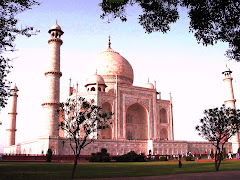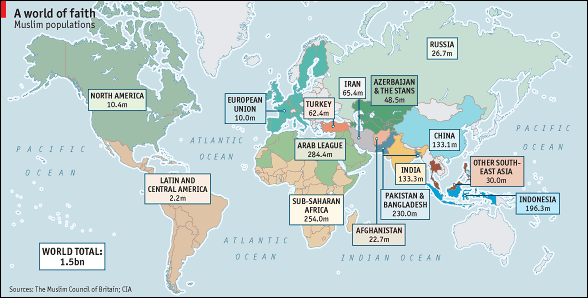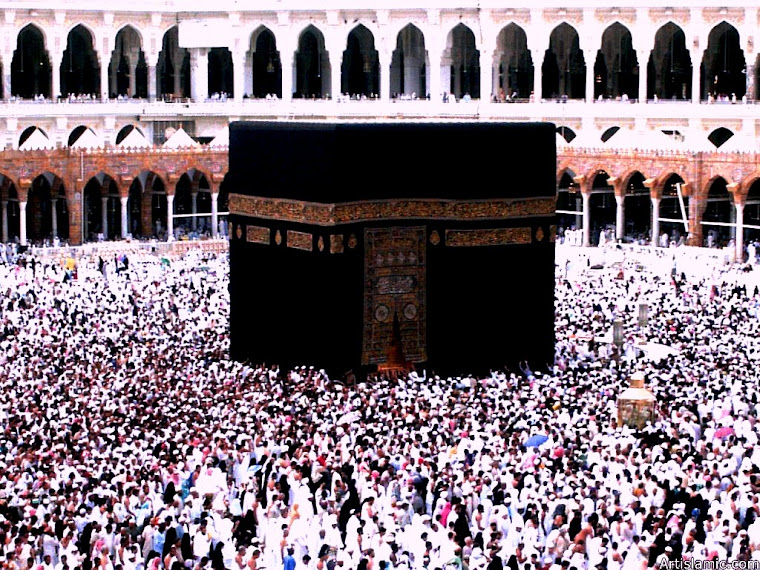According to the realm of eastern literature the problem started with Zionism as a political movement, which “claims that Palestine belongs to the Jews” (Mehdi 11). It has based its claim on historical grounds and appealed to religious and humanitarian sentiments. Jews had lived in North America since early colonial times, the first Dutch Jews arriving in New Amsterdam in 1654. It was only in mid-nineteenth century with the arrival of German Jews in the aftermath of the failed revolutions of 1848 that “Jews started to become a significant element in the American population” (Fraser 18).
As realization of the near destruction of the Jewish people of Europe spread, the Zionist movement in the U.S., the country that now contained the largest Jewish community in the world, gained a tremendous support. It was inconceivable to most U.S. citizens regardless of their religious beliefs, that they could fail to support Jewish aspirations for a safe place where Jews could never again be senselessly slaughtered. In the process, the reality of Palestine and its indigenous people was ignored. (Gerner 42)
The events that caused the exodus of the Palestine Arabs did not begin in 1948 or for that matter with the Balfour Declaration in 1917. They began much earlier in the history of the conflict between the Christian West and the Muslim East. This is “a struggle that cannot be fully understood or appreciated unless one grasps the problem as it originated in the Ottoman Empire” (Howley 3).
By British declaration of intent to create a “Jewish National Home in Palestine,” David Ben-Gurion reads out the proclamation of the State of Israel on May 14, 1948 (Howley 7). Leonard Stein, authoritative historian of Zionism, argued that the real purpose of the Zionist movement was to detach Palestine from its people and form a very effective guard for the Suez Canal thus turning it into a Jewish State.[1]
According to International Law Prof. Henry Cattan, the Palestine Mandate was invalid on three grounds:
1. By endorsing the Balfour Declaration and accepting the concept of the establishment of Jewish national home in Palestine, it violated the sovereignty of the people of Palestine and their natural rights of independence and self-determination.
2. It violated, in spirit and in letter, Article 22 of the Covenant of the League of Nations, under the authority of which it purported to be made. Stressing that the League was founded on the principles of non-annexation of territories and that the mandates prohibited the alienation of territory, have ruled that sovereignty rested with the people of a Mandated Territory, albeit in suspense since they could not exercise it.
3. The endorsement and implementation of the Balfour Declaration conflicted with the assurances and pledges given to the Arabs during the 1st World War by Great Britain and the Allied Powers. The denial to the Palestine Arabs of their independence and the subjection of their country to the immigration of foreign people were breach of those pledges.
[1] Presented in the Committee on the Exercise of Inalienable Rights of the Palestinian People, UN Publication, 1990.
Since there is no common ground on Arab-Jewish Relationship e.g. the Arab community is predominantly Asian in character; the Jewish community is predominantly European. They differ in religion and in language. Their cultural and social life, their ways of thoughts and conduct, are as incompatible as their national aspirations. It is time to assert some geopolitical issue areas.
Water Politics in Jordan River System Indirectly Affecting Israeli-Palestinian Conflict
Three headwaters of the Jordan River System:
1. Dan (Israel)
2. Hasbani (Southern Lebanon)
3. Banias (Golan, occupied by Israel in 1967)
The main axis of the Jordan River rises on the western and southern slopes of Mount Hermon in the triangle between Lebanon, Syria, and Israel, and discharges into the Dead Sea, nearly 400 meters below sea level. The total natural discharge of the basin – including all the tributaries – average around 1,500 million cubic meters.
Groundwater Resources
The Mountain Aquifer of the West Bank
In all of these three areas more than 50% of the available renewable supply is provided by groundwater.
Three General Basins:
§ The Western Aquifer (called Yarkon-Taninim Aquifer in Israel), which is the most abundant, providing more than half of the total yield, i.e. 350 mcm, 40 of which are brackish;
§ The North-Eastern Aquifer contributing about 130 mcm (of which 70 mcm brackish); and
§ The Eastern Aquifer with about 150 mcm (of which 70 brackish).
The Mountain Aquifer of the West Bank
The water crisis in the Gaza Strip
With more than 2,000 persons per km2, the Gaza Strip is among the most densely populated areas of the world. It is not an area with conspicuous water resources. Rainfall occurs only in the winter months and percolates into temporary flows. Water consumptions amounts to 100-110 mcm per year. Gaza aquifer is highly political by irrigation return flows due to improper agricultural practices and the high porosity of the soils. Moreover, delays in establishing an efficient water administration and resulting lack of monitoring, coupled with the harsh economic situation, led to uncontrolled drilling activity for agricultural and other uses.
Water pollution
Intrusion of saline sea or brackish water into the fresh water table and increasing salinity of some surface water bodies are caused by quantitative over-exploitation of scarce resources. A worst situation where mechanisms of control and monitoring are all but non-existent and knowledge about proper use of chemicals among farmers is insufficient. The result is the routine and heretofore virtually ignored contamination of Palestinian food, water and the environment posing a menace to farmers and consumers alike.
The social impact of the water crisis
§ Insufficient fulfillment of basic human needs.
§ Negative effects on human health.
The struggle over water rights as an integral part of the Palestinian Question
A series of military orders put exploitation of water resources under strict control of the Israeli administration, severely limiting Palestinian use. Palestinian drilling of wells is forbidden without permission by the Israeli authorities. West Bank, Palestinians are only allowed to drill shallow of 60-140 meters. Reforestation is prohibited in the recharge area of the aquifer.
As a result of these policies, Israel, including the settlers, is presently utilizing nearly 80% of the shared waters of the West Bank, while Palestinians are left with less than 20%. Palestinians on the West Bank are forced to pay higher rates for their water supply. Mekoroth, the water supplier, charges municipalities 1.8 New Israeli Shekels (NIS) per cubic meter and 2.1 NIS for individuals, whereas it charges Israeli settlements only 0.5 NIS on the West Bank and 0.3 in the Gaza Strip.
Relating to the permanent status of the occupied territories, the dispute over water right is narrowly linked to the question of the definitive borders of an eventual Palestinian state. The territorial extension of Palestine will determine access to wells and springs, and consequently the claim to water rights and shares.
Palestinian refugee and East Jerusalem question indirectly relate to water. It will change demographic patterns and support different needs and claims of the two sides regarding water quotas.
Water Diplomacy
Agreements on the principle of “equitable utilization” based on a wide range of elements like:
· natural factors such as hydrological origin of water and climate;
· social and economic needs;
· relative dependency of each state on shared waters and the availability of alternatives; and
· efficiency criteria in the use of basin's water.
Progress in the proper political sphere will enable first steps of cooperation in practical spheres such as water management. A proposal is that Israel should markedly raise the water quota allocated to Palestinian domestic consumption, bring down the water price in the West Bank and Gaza Strip, and far granting the Palestinians full control over the Eastern Aquifer by the Israeli government.
Question on the Palestinian Refugee
The Palestinian refugee problem was created in the course of the 1948 Israeli War of Independence or the Zionist Movement as some historians called it.
The general term "Palestinian refugee" refers to population groups whose social and political situation is extremely uneven. Thus, 22 percent of the refugees live in the Gaza Strip; according to the UN agency, 818,000 of the 1.1 million Palestinians who reside in the Gaza Strip are refugees. Most of them are members or descendants of families that in 1948 fled from the region extending from Jaffa southward. Nearly half of these refugees, 440,000 of them, live in eight tremendously overcrowded refugee camps. The Shati camp, for example, is home to 74,000 refugees who are squeezed into an area of less than one square kilometer.
In 1949, the Palestinian population totaled 1,380,000 people, of whom 730,000 were refugees. Fifty-two years later, a second and third generation has been added to the first generation of refugees: Natural growth at a rate that is one of the fastest in the world has multiplied their number by fourfold at least. According to data of the United Nations Relief and Works Agency (UNRWA), which devotes its activity to the Palestinian refugees, their number today stands at 4 million.
Israeli partisans often assert that the Arab Palestinian refugees left because Arab radio broadcasts and Arab leaders told them to leave and make way for invading Arab armies, promising them a quick and easy return. Palestinian partisans claim this is not so, and that the Palestinians were forcibly expelled. In fact, there is evidence of expulsion, of fear of expulsion but also of encouragement by Arab leaders to leave.
Theodore Herzl, the father of Zionism, says "When we occupy the land, we shall bring immediate benefits to the state that receives us. We must expropriate gently the private property on the estates assigned to us. We shall try to spirit the penniless population across the border by procuring employment for it in the transit countries, while denying it any employment in our own country."
In the West Bank, the refugee population is 580,000 out of a total population of 1.8 million Palestinians, according to the UN relief agency. One quarter of the refugees, live in 19 camps. The refugee families in the camps maintain an attachment to their towns and villages of origin.
There are 1.7 million Palestinian refugees in Jordan, according to the UN agency, of which 200,000 are considered "displaced persons" - Palestinians who left the West Bank in 1967. About 280,000 of the refugees live in 13 camps. The majority of the refugees in Jordan holds Jordanian citizenship and has integrated themselves into the country's economic and social life.
There are 376,000 Palestinian refugees registered with UNRWA in Lebanon, constituting 10 percent of the country's population. According to Yitzhak Ravid, the actual number of refugees in Lebanon is between 250,000 and 300,000. Most of them are from families that fled to Lebanon from Haifa and Galilee in 1948. Of all the refugees in the Arab states, their plight is the most severe. Because of the Lebanese government's fear of upsetting the ethnic-religious balance in the country, only a quarter of the refugees have received citizenship. The majority of the refugees in Lebanon live in 12 camps. They are not accepted to government positions and are also barred from a wide range of professions, including those that require academic training.
A few hundred thousand Palestinians whose families fled from their homes in 1948 live in the Gulf States (according to the data of the PA's refugee affairs ministry, there are 274,000 refugees in Saudi Arabia, 34,000 in Kuwait and 105,000 in the other Gulf states), in other Arab countries and elsewhere in the world. The refugees in the Gulf States do not enjoy civil rights but, overall, are relatively well off economically. The Palestinian Diaspora in the United States numbers about a quarter-of-a-million people, who constitute about 10 percent of the Arab-American community. Most of them are American citizens and have integrated economically and socially.
UN Educational Program for Palestinian Refugees
UN interest in education for the Palestine Arab refugees began almost immediately after the development of the problem. By agreement between the two bodies, the UNRWA-UNESCO educational and training program was initiated in May of 1950. From the modest initial allocation of slightly $400,000 in 1950, the educational expenditures rose to $15,000,000 by 1968. (Howley 32)
Refugees’ Sentiments
The refugees themselves have no great love for UNRWA. Their basic feeling has been, and continues to be, that the UN was responsible for their plight and thereby the relief given by the agency is considered as a right and as such is inadequate. As the environment of the host countries has changed so also has the refugee population change.
Refugees’ Developments
The refugees who left Palestine some twenty years ago as predominantly uneducated labor have grown to become one of the most literate groups in the Middle East. The refugee group has also, by taking advantage to the opportunities offered by UNRWA, been able to a great extent to break out of the traditional Arab society. In the process, it has developed urban aspirations for upward mobility and economic security because of increasing contacts with the urban societies in the host countries. (Howley 58-60)
Concerns on Israeli Employment Policies to the Palestinians
“The constitution of the Jewish Agency: Land Holding and Employment Clauses” (Cattan 38)
§ Land is to be acquired as Jewish property and … the same shall be held as inalienable property of the Jewish people.
§ “Keren Kayemet draft lease: Employment of Jewish labor only”
§ Article 11 of Keren ha-Yesod agreements – the settlers undertakes … not to hire any outside labor except Jewish laborers.
Israel’s exploitation of Palestinian labor resources
Characterized by a continuing lack of equal pay for equal work. This situation helped to protect Israeli workers from Palestinian competition. Underprivileged and unpaid compared with the Israeli labor force. (Cattan 233)
Palestinians have fewer rights with regard to premiums, pensions, sick leave, recuperation, clothing and vacation. A sum of equal to 20% of wages is deducted to Palestinian labor force. Some notable discrimination:
§ Subhuman conditions in Tel Aviv,
§ sleeping in tables in restaurants where they work,
§ crowded into unsanitary cellars and attics.
§ Dehumanized by the long hours, low pay (approximately half that of Israeli workers), poor attitudes and maltreatment by employers,
§ reported as being searched, arrested as harassed in other ways on an average of twice a week.
§ They are ineligible for National Insurance Institute (NII) old-age, survivors’ and disability pensions (smaller, flat rate pensions) received by most Israeli retirees in addition to their Histadrut pensions (like US social security pensions), compensation or insurance for long term care or injury in non-occupational accidents.
§ They are also ineligible for NII children’s allowances, funded only by employer contributions, and for NII-administered welfare programs funded by Israeli taxpayers through the budget (income support benefits for widows, orphans, mothers of dependent children, victims of disasters, etc.)
A distinctive feature of Palestinian employment in Israel is a high percentage of Palestinians seeking daily employment illegally and having to stay overnight illegally in Israel. (Cattan 234)
Unfair Trade Relations
Israel’s major considerations, influencing its policy towards trade with the occupied territory, is that Israeli exports should be able to flow freely into the West Bank and Gaza Strip while exports to Israel should be tightly controlled to safeguard the interests of Israeli producers.
Palestinian crops e.g. cucumbers, tomatoes, eggplant, melon, etc. capable of competing with Israeli crops were generally banned from Israeli markets or, if allowed to enter, were imported only in small and carefully controlled quantities, thus protecting the Israeli producers of these commodities. Also, to prevent “the threat of competition” from Palestinian manufacturers, a new military order enforced complex labeling guidelines for all Palestinian products adding further costs to an already burdened manufacturing process. (Cattan 235)
Human Rights issues affecting the occupied territories to the Palestinian settlers in West Bank and Gaza (Gerner 95):
§ shooting and beating of unarmed individuals;
§ confiscation of required identification cards without cause;
§ expulsion from the region without specific charges;
§ restrictions on residency rights for Palestinians who were not physically present in the West Bank or Gaza Strip in June 1967;
§ suppression of Palestinian culture (e.g. the use of the word “Palestine,” display of the Palestinian flag, or the wearing of its four colors are all considered crimes);
§ the closure of Palestinian national institutions;
§ collective punishment such as curfews against entire neighborhoods, villages, or districts;
§ intimidation of families of individuals in whom the authorities are interested;
§ military censorship of all publications;
§ confiscated of land and water resources;
§ differential taxation policies; and
§ restrictions on economic activities.
Israelis 2005 Security Barrier Wall or the “Seam Line”
As of February 20, 2005, the following changes had been made relative to the original planning shown below:
§ The barrier route had been moved closer to the green line border, so that only about 7% of West Bank territory was included in the area it encloses on the Israeli side. Claims that the fence encloses or controls larger areas of the West Bank are false. It does include a large number of Palestinians in urban areas in Jerusalem, who will still be on the Israel side of the fence.
§ Plans for a "projected" eastern route that would have encircled the Palestinian cities have been dropped.
§ Plans to extend the barrier to Ariel were put in abeyance.
The planned and completed barrier route still includes several large Israeli settlements in the West Bank, including Efrat, Gush Etzion and Maaleh Edumim.
The fence aroused opposition from right wing Israelis and settlers, because it would "define" the route of the fence as the approximate border, and leave most of the settlements outside. The Palestine National Authority opposes the fence as well. Palestinians oppose the fence because:
- It encloses Palestinian territory on the Israeli side, de - facto annexing it to Israel.
- It cuts people off from work, medical services and their fields
- In some places it runs through the middle of towns and in front of entrances of houses.
- Opponents of the security barrier call it an "Apartheid Wall." It is mostly a chain-link fence, but makes use of prefabricated concrete slabs in built-up areas.
Israeli peace groups want the fence to be built along the 1949 Green Line armistice border. IDF security experts argue that the topography does not permit putting the barrier along the green line in many places, because there would be hills or tall buildings on the Palestinian side. In the Jerusalem area, the old border cut the city in two. The Old City of Jerusalem including the Temple Mount and Jewish quarter would be unprotected, and parts of the road to Jerusalem would lie on the other side of the barrier, as well as the Hebrew University campus at Mt. Scopus.
Demonstrations against the barrier have often been suppressed by the IDF with rubber bullets and other extreme force, though the demonstrations by Palestinians and by Israeli anarchists were non-violent. This lends an additional dimension to the problems associated with the barrier.
The Israel Ministry of Defense claims that fields and orchards blocked by the fence are replanted in accessible locations by the IDF, and that 60,000 olive trees have been replanted under this program.
In July of 2004 the International Court of Justice (ICJ) at The Hague gave an advisory (non-binding) ruling that declared the barrier violates international law, because its route does not take sufficient account of the suffering caused to Palestinians. The court further ruled that any part of the barrier built on the Palestinian side of the Green Line is illegal. Israel rejected the ICJ opinion. Nonetheless, the Israel High Court has ruled many sections of the barrier to be illegal because the route does not provide the proper balance between security needs and hardship to the population. This, along with US pressure, has caused the Israel government to revise the route of the barrier several times, including moving sections that were already built.
2007 Segregated Road
Israel is constructing a road through the West Bank, east of Jerusalem, that will allow both Israelis and Palestinians to travel separately. There are two pairs of lanes, one by a tall wall of concrete patterned to look like Jerusalem stones, an effort at beautification indicating that the road is meant to be permanent. The Israeli side has various exits; the Palestinian side has few. The purpose is to permit Israel to build more settlements around East Jerusalem, cutting the city off from the West Bank, not allowing Palestinians to travel unimpeded north and south through Israeli-held land. Khalil Tufakji, a prominent Palestinian geographer, says the road “is part of Sharon's plan: two states in one state, so the Israelis and the Palestinians each have their own roads.” In the, he said, “there is no Palestinian state, even though the Israelis speak for one.”
As of August 11, 2007, the project envisions most Palestinian traffic continuing through underpasses and over bridges.
What has to done with these immense geopolitical issue areas afflicting the Israeli-Palestinian conflict?
Potential Areas of Cooperation (Spiegel 125):
1. Water
§ An interim agreement is urgently needed on existing water resources and water clearing arrangements;
§ Pricing policies should take precedent over any other issue among countries sharing the Jordan River and its tributaries;
§ Pending issues such as dams over Yarmuk should be finalized; and
§ Long-term projects such as desalination must be considered.
2. Investments
§ Where emphasis is laid on tourism as a job-creating activity, which could be done in a highly coordinated fashion with little political friction. A special Ad Hoc Committee is needed to iron out difficulties facing the cross-border movement of people and vehicles. Other related to pooling, investments, and coordination in joint tourism facilities can also be pursued.
3. Money and Banking
§ Where interim arrangements are needed to cope with the existing multicurrency system in the occupied territories. A joint committee, including the IMF, should meet to oversee and facilitate the transition. In the longer run, a Middle East bank for reconstruction and development is proposed.
Revisiting United Nations contribution to mitigate the conflict (Gerner 152):
§ voted in 1947 to partition Palestine and create a Jewish state as part of the territory;
§ created the UN Relief and Works Agency to take responsibility for the Palestinian refugees;
§ has maintained armed forces and military observer groups in the Levant since 1948;
§ sent mediators such as Count Folke Bernadotte, Ralph Bunche, and Gunner V. Jurring to the region in the 1940s, 1950s, and 1960s;
§ affirmed the right of “the people of Palestine’s self-determination” in 1969;
§ in 1975 declared that Zionism is a form of racism;
§ has passed dozens of General Assembly and Security Council resolutions calling for ceasefires, condemning aggressive actions by each of the parties, and suggesting approaches for conflict resolutions;
§ and in April 2003, US President Bush, working in conjunction with the EU, UN, and Russia - the "Quartet" - took the lead in laying out a roadmap to a final settlement of the conflict by 2005, based on reciprocal steps by the two parties leading to two states, Israel and a democratic Palestine.
The formation of the diplomatic Quartet (Tony Blair as the international envoy) in the Middle East, which comprises of the United Nations, the European Union, Russia, and the United States, will be having a Mideast Peace Conference this November 2007 to discuss issues for negotiation like:
§ specific, fixed, agreed-upon boundaries for Israel and for the Arab states in the region;
§ the status of Jerusalem;
§ the political and civil status of Jewish Israelis currently living within the West Bank including East Jerusalem, and the Gaza Strip;
§ the political and civil status of Palestinians currently living Within Israel;
§ the political and civil status of Palestinians and Jews currently living outside the borders of the British Mandate of Palestine;
§ compensation for Palestinians and Israelis who were forced to leave their Israeli-Palestinian conflict;
§ the allocation of resources such as water among states in the region;
§ and the assurance of mutual security for all states and all peoples in the region.
Three major issues to be tackled are the future borders of a Palestinian state, the question on Jerusalem, and the future of the refugees.
Proposals presented in the 2001 Taba Negotiations were the following:
On territorial disputes, West Bank and Gaza Strip would be in the hands of the Palestinian Authorities and Israel gives up a land corridor between the two, allowing free flow of traffic but was rejected by the Israelis.
On the question of Jerusalem, both agreed that East Jerusalem would be Palestine's Sovereignty and West Jerusalem under Israel's Sovereignty. In the Old City, Jewish and Armenian Quarters will be Israel's jurisdiction and Arab Quarter as jurisdiction of the future Palestine state.
They both agreed that it would be there capital as Yerushalayim for Israel and al-Quds for Palestine. For holy sites, Western Wall and Wailing Wall will be in Israelis respective and religious control and management. While Haram Al-Sharif or the Temple Mount will be in Palestinians respective and religious control and management.
On the future of the Palestinian Refugees, Israel's suggested for a three-track fifteen-year absorption. The first track referred to the absorption to Israel of more than 25,000 in the first three years or 40,000 in the first five years of the program. The second track referred to the absorption of Palestinian refugees into the Israeli territory that shall be transferred to Palestinian sovereignty. And the third track is the absorption of refugees in the context of a family reunification scheme. Or refugees can be compensated in lieu of being allowed to return to Israel. Those living in camps in Syria, Jordan, and Lebanon can move to the new Palestinian state or become citizens of the countries they’re in.
On security matters, Israeli side maintained that the state of Palestine would be nonmilitarized as per the Clinton proposals. The Palestinian side was prepared to accept limitations on its acquisition of arms and be defined as a state with limited arms.
Conclusion for the Moment: Dark Future Curtails
The Arab League proposed a peace initiative as advocated by Saudi Arabia but was rejected by the Israeli government. The Palestinians split in two as the militant Hamas party, the dominant parliament, which the EU and US declared as a terrorist group but Russia, has maintained its ties, controls the Gaza. The moderate Fatah Party led by Pres. Abbas, who formed an unconstitutional new cabinet appointing Fayyad as the new Prime Minister, controls the West Bank. US Pres. Bush gave a $30 billion military aid to Israel to preserve its superiority and to counter negative influences of Al-Qaeda, Hezbollah, Iran, and Syria. This may ignite a third world war and neither collective security nor alliances would solve the problem.
These two national groups have fought over one small piece of land in the Levant for over 90 years. Palestinians and the Arab countries have been unable to defeat Israel’s militarily; Israel has been unable to eliminate Palestinian nationalism. Neither of these conditions is likely to change in the near future. Thus, the choice facing Israelis and Palestinians is whether to continue to fight indefinitely or to search for negotiated settlement to their conflict. With mutual recognition, mutual acceptance of the right of national self-determination and mutual acceptance of fixed and secure boundaries for all states in the Levant, a way may be found to resolve this enduring and destructive dilemma in world politics.
Consequently, the Palestinian Nationalism and Zionism must change for a lasting peace if their ideals have become dogmatic and endanger the continuity of both nations. For the good of one nation is the good and protection for the other, and their continuity depends on retaining the goodwill of both. Thus, the Arabs must recognize the existence of the Israeli People and in return, they should acknowledge the Palestinian nationalism and right to self-determination.
References:
Books
Cattan, Henry. Palestine and International Law: The Legal Aspects of the Arab-Israeli Conflict. 2nd ed. London: Longman Group, 1978.
Committee on the Exercise of the Inalienable Rights of the Palestinian People. The Origins and the Evolution of the Palestine Problem 1917-1988. New York: United Nations Publication, 1990.
Fraser, T.G. The Arab-Israel Conflict. London: Macmillan Press, 1995.
Gerner, Deborah J. One Land, Two Peoples: The Conflict over Palestine (Dilemmas in World Politics). Kansas: Westview Press, 1991.
Howley, Dennis C. The United Nations and the Palestinians. New York: Exposition Press, 1975.
Mehdi, Mohammad T. Peace in the Middle East. New York: New World Press, 1967.
Spiegel, Stephen L. The Arab-Israel Search for Peace. California: Lynne Rienner Publisher, 1992.
Journals
“The Taba Negotiations (January 2001).” JSTOR Archives (Journal of Palestine Studies) 31 (2002): 79-89.
URL source: http://links.jstor.org/sici?sici=0377-919X%28200221%2931%3A3%3C79%3ATTN%282%#E2.0.CO%3B2-M
Libiszewski, Stephen. “Water Disputes in the Jordan Basin Region and their Role in the Resolution of the Arab-Israeli Conflict.” Environment and Conflicts Project (ENCOP) 13 (1995): 1-100.
URL source: http://www.mideastweb.org/Mew_water95.pdf
“Palestinian Independence.” JSTOR Archives (Journal of Palestine Studies) 18.2 (1989): 151-154.
URL source: http://links.jstor.org/sici?sici=0377-919X%28198924%2918%3A2%3C151%3API%3E2.0.CO%3B2-E
Rolef, Susan Hattis. “The Palestinians’ Right to Self-Determination.” JSTOR Archives (Journal of Palestine Studies) 16.2 (1987): 170.
URL source: http://links.jstor.org/sici?sici=0377-919X%28198724%2916%3A2%3C170%3ATPRTS%3E2.0.CO%3B2-Z
Davis, Ronald W. “Palestinian Arab Sovereignty and Peace in the Middle East: A Reassessment” JSTOR Archives (Journal of Peace Research) 11.1 (1974): 63-73.
URL source: http://links.jstor.org/sici?sici=0022-3433%281974%2011%3A1%3C63%3APASAPI%3E2.0.CO%3B2-V
Web Site Sources
Isseroff, Ami. “In a Nutshell: Israeli Palestinian Conflict.” MidEastWeb for Coexistence © 2003-2007. 08 Sept. 2007.
URL source: http://www.mideastweb.org/nutshell.htm
Badran, Kamal. “Refugee Camp Profiles.” The United Nations Relief and Works Agency for Palestine Refugees in the Near East © 1999-2003. 02 Oct. 2007.
URL source: http://www.un.org/unrwa/refugees/camp-profiles.html
Periodicals
Koopmans, Ofira. “ Hamas’ Rise, Lebanon War Top Israeli-Palestinian Year.” Manila Bulletin. 22 Dec. 2006: 15.
Amer, Pakinam. “Three Civil Wars Loom in Mideast.” Manila Bulletin. 23 Dec. 2006: 11, B-8.
Romulo, Beth Day. ”Tony Blair’s Mideast Diplomats Offensive.” Manila Bulletin. 4 Jan. 2007: 10, B-12.
---. “Saudi Arabia Takes Stand.” Manila Bulletin. 22 Feb. 2007: 10.
Amr, Wafa. “Fatah-Hamas Rivalry Persits.” Manila Bulletin. 14 Feb. 2007: 11, B-11.
Copans, Laurie. “Prior to recognition: US, Israel Ask Palestinian Government to Renounce Violence.” Manila Bulletin. 19 Feb. 2007: 17.
“Talks End between Rice, Arab Foreign Ministers.” Manila Bulletin. 27 Mar. 2007: B6.
“Israel Rejects Arab Peace Initiative.” Manila Bulletin. 30 Mar. 2007:15.
“Olmert: Peace Deal Possible within 5 years.” Manila Bulletin. 01 Apr.
2007: 26.
“Palestinians Split in Two as Hamas Controls Gaza.” Manila Bulletin. 16 June 2007: 15.
“New Palestinian Cabinet Sworn In.” The Philippine Star. 18 June 2007: A-25.
“New Abbas Government Pave Way for Peace Talks, says Israel PM.” Philippine Daily Inquirer. 19 June 2007: A20.
“Abbas Rules Out Dialogue with Hamas’ Terrorist.” The Philippine Star. 22 June 2007: A-26.
“Blair Named Mideast Troubleshooter.” The Philippine Star. 29 June 2007; A-25.
“Israel Approves Palestinian Prisoner Release.” The Philippine Star. 09 July 2007: A-24.
Gueco, Luverner B. “Constitution Framers Challenge Abbas: Say Palestinian President Wrong to Appoint New Government, Ease Out Hamas.” Philippine Daily Inquirer. 10 July 2007: A20.
“Israel to Stop Hunting 180 Wanted Fatah Militants.” Philippine Daily Inquirer. 17 July 2007:A19.
“Jewish State’s 9th Leader: Peres Vows to Pursue Peace as Israel President.” Philippine Daily Inquirer. 17 July 2007: A19.
“Bush Calls for Mideast Peace Initiative.” The Philippine Star. 18 July 2007: A-24.
“Putin, Abbas to Seek Way Forward in Middle East.” Manila Bulletin. 29 July 2007: 22.
“Israel’s Olmert Announces $30 billion US Defense Aid.” The Philippine Star. 30 July 2007: A-26.
“Israeli’s Olmert Announces $30 Billion US Defense Aid.” The Philippine Star. 30 July 2007: A-26.
Israel to Get $30B US Aid to Preserve its Superiority.” Philippine Daily Inquirer. 31 July 2007: A21
“US Arms Pacts to Counter Iran, Syria – Rice.” The Philippine Star. 01 Aug. 2007: A-22.
Erlanger, Steven. “Israel Plans Segregated Road through already Divided Land” Manila Bulletin’s The New York Times. 18 Aug. 2007: 3.
“RP Contingency Plan Ready for Isarel-Iran Conflict.” The Philippine Star. 28 Sept. 2007: 8.
“Israel Freeing 87 Palestinians to Aid Abbas.” Philippine Daily Inquirer. 2 Oct. 2007: A20.
A.M.Nassef


















